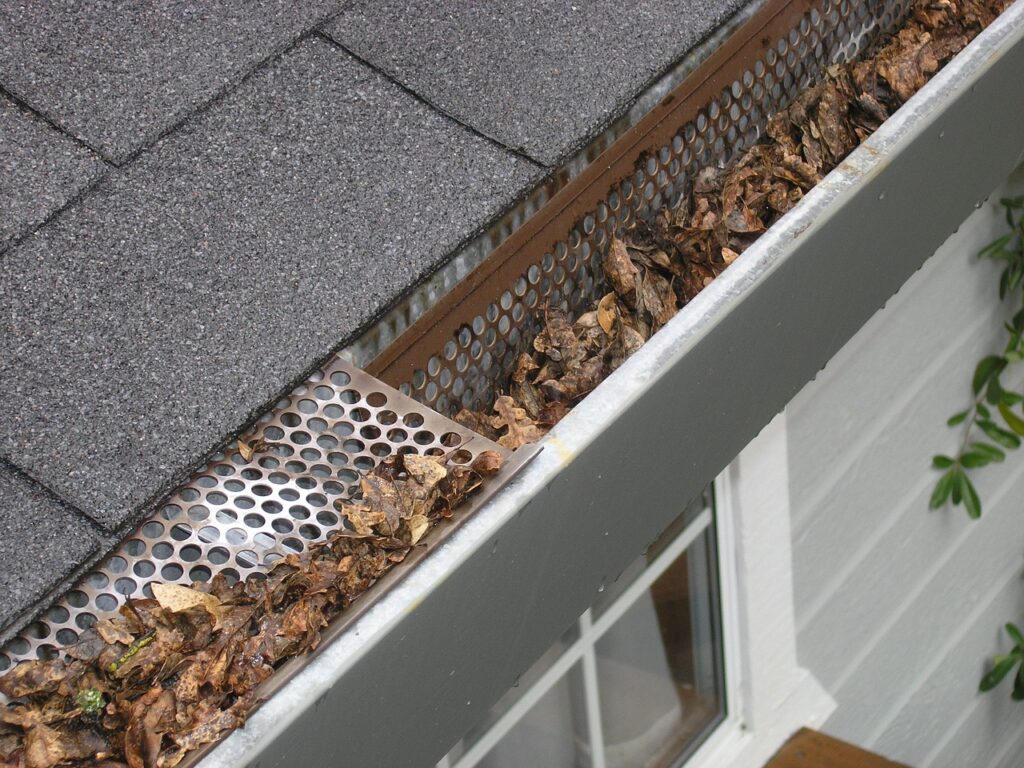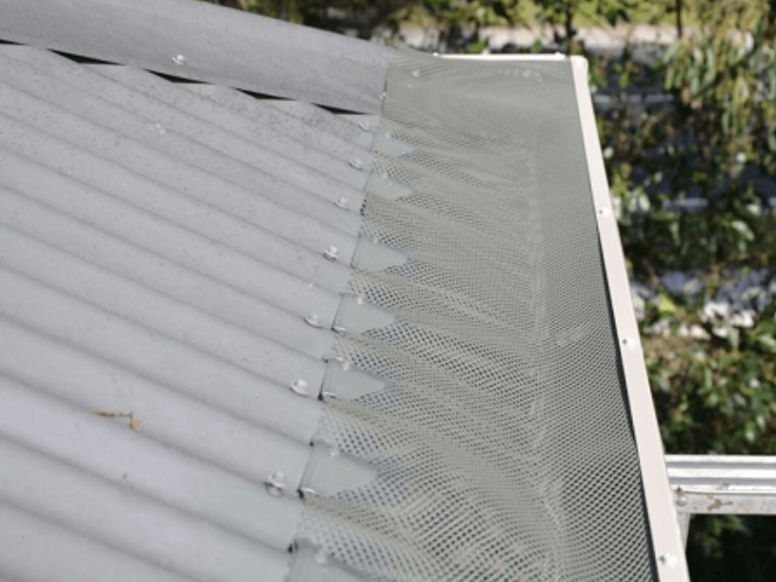Ensuring the protection of your home from potential damage caused by clogged rain gutters is paramount. When leaves, pests, and debris obstruct the flow of water, it can result in harm to your roof, walls, and foundation. This is where gutter guard services in Australia play a vital role. Gutter guards are designed to keep debris out of your gutters while allowing water to flow freely. However, with various styles available, choosing the right gutter guard can be a daunting task.
To simplify the selection process, we have put together an extensive guide that focuses on the common types of gutter guards and the materials used in their construction. Read on to discover the gutter guard that suits your home’s aesthetics and minimizes the need for frequent gutter maintenance.

The Six Different Types of Gutter Guards
Gutter guards are not all created equal. The process of choosing the right one goes beyond simply picking the most popular option. Some designs are better suited for specific types of debris or various climates, while others may not match your home’s visual appeal.
Below, we outline the six different types of gutter guards that you should consider as you explore your options:
1. Screen Gutter Guards
Screen gutter guards consist of perforated metal or plastic sheets placed on top of the gutter. These perforations block medium to large debris while still allowing water to pass through. However, due to the relatively large holes, screen gutter guards are less effective at preventing small debris like pine needles, pollen, and shingle grit from entering. Additionally, their lightweight construction makes them unsuitable for windy areas, where they could be dislodged from the gutter.
While screen gutter guards are suitable for DIY installation and are budget-friendly compared to more durable alternatives, their lifespan is short, and they don’t significantly reduce the frequency of required cleaning.
2. Mesh Gutter Guards
Mesh gutter guards often outperform screen guards by striking a balance between debris filtration and water flow. They consist of a flat perforated barrier similar to screen guards but with smaller holes. This enables them to block a wider range of pests and debris.
You have the option to choose between metal and plastic materials, as well as various installation styles. For those less experienced in DIY work, it’s recommended to hire professional gutter guard installers. Be cautious of products that slide under your shingles, as this might void your roof warranty, and avoid flimsy options that could be blown away by the wind.
3. Micro-Mesh Gutter Guards
Micro-mesh gutter guards feature finely woven mesh screens that effectively keep even the smallest debris at bay. They excel in areas where pollen, pine needles, and dirt are prevalent. Experts widely consider them the most effective design available. However, their exceptional filtration comes at the cost of a reduced flow rate. Careful consideration is required when installing them in high-flow areas, such as roof valleys.
Professional installation is the norm for micro-mesh gutter guards, often accompanied by additional services like gutter cleaning and sealing. While some DIY options exist, these guards are primarily designed for professional installation. Some companies providing gutter guard services in Australia may also offer gutter cleaning, sealing, and identification of potential issues that contribute to future damage.
4. Reverse-Curve Gutter Guards
Reverse-curve gutter guards, also known as surface-tension guards, employ an effective design to block debris from entering gutters. These guards feature a curved plastic or aluminum hood that creates a slot between the guard and the gutter lip. Water flows down the hood, curves around the edge, and returns to the gutter, while debris slides off to the ground below.
Despite being one of the most efficient designs available, it’s not flawless. During heavy rain, excessive water momentum could cause water to overshoot the gutter edge. Moreover, these guards are inserted under your shingles to match your roof’s pitch, potentially conflicting with your roof warranty.
Surface-tension gutter guards are visible from the street, which might not align with your home’s aesthetics. Many companies offer various colors to help the guards blend with your existing roof and gutters.
5. Brush Gutter Guards
Brush gutter guards resemble large pipe cleaners within the gutter trough. The concept involves water flowing through the bristles while trapping debris. However, these guards need more frequent removal for cleaning, as debris accumulates within them. They are also not durable under intense sunlight, necessitating replacement every few years.
Advantages of brush gutter guards include their affordability and ease of installation. However, if you seek a durable and long-lasting gutter guard, brush guards may not be the best choice.
6. Foam Gutter Guards
Foam gutter guards are cost-effective and easy to install but should be regarded as a temporary solution, if used at all. Triangular foam pieces rest inside the gutter, allowing water to pass through while trapping debris on top.
The damp environment within the foam promotes the growth of seedlings and trees, which can damage your gutters or even pose a fire risk. Also, customer feedback indicates that foam deteriorates rapidly due to sun exposure and other weather conditions, necessitating frequent cleaning.
Materials for Gutter Guards
Gutter guards are crafted from various materials, each with its own advantages and disadvantages. The material options may be limited by the style of guard, but homeowners should be aware of the following gutter guard materials:
1. Foam
Foam is exclusively used for foam gutter guards. It is affordable and easy to work with for DIY projects but carries the risk of mold or seedling growth. Both of these issues can lead to damage to your gutters, fascia boards, and more.
2. Vinyl and Plastic
Plastics are commonly employed for gutter guard frames, screens, reverse-curve designs, and the bristles of brush guards. Plastic is cost-effective and resistant to corrosion but lacks the strength of metal alternatives. It is also susceptible to cracking, warping, and bending.
3. Aluminium
Aluminium, a lightweight and corrosion-resistant metal, is used for mesh screens, supports, and other components. Although it is not the most durable metal option, it is widely used due to its resistance to warping, cracking, and sun degradation.
4. Stainless Steel
Steel is a prevalent choice for mesh and micro-mesh screen designs. It boasts exceptional durability, making it suitable for homes with overhanging trees that could potentially pierce the gutter guard. Stainless steel alloys naturally resist corrosion and temperature fluctuations.
5. Copper
Copper, while considered a premium material, is rarely utilised for gutter guards. Its unique chemical properties deter mold and mildew growth. It falls between aluminium and steel in terms of strength. Few companies offer copper gutter guards, but they may be worth considering to match the appearance of existing copper gutters and maintain your home’s visual appeal.
By familiarising yourself with these gutter guard types and materials, you can make an informed decision to safeguard your home from potential damage while reducing the need for constant gutter maintenance.
Bid farewell to clogged gutters that compromise the aesthetics and value of your home. Hire an expert installer from Gutter Guards Australia or a similar company that offers various benefits to homeowners. From saving time and money to ensuring the safety of your property and family, professional installation enhances the performance and longevity of your gutter guards. Contact us now and protect your precious home from potential water damage and costly repairs.
